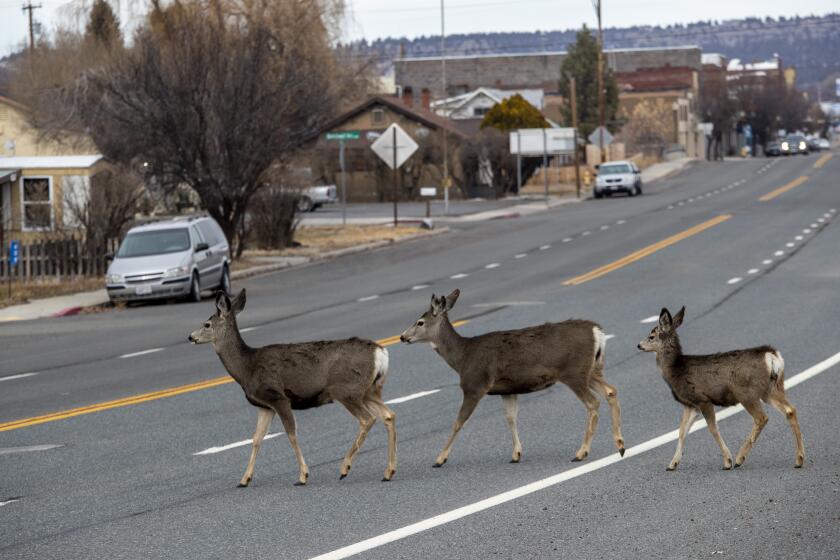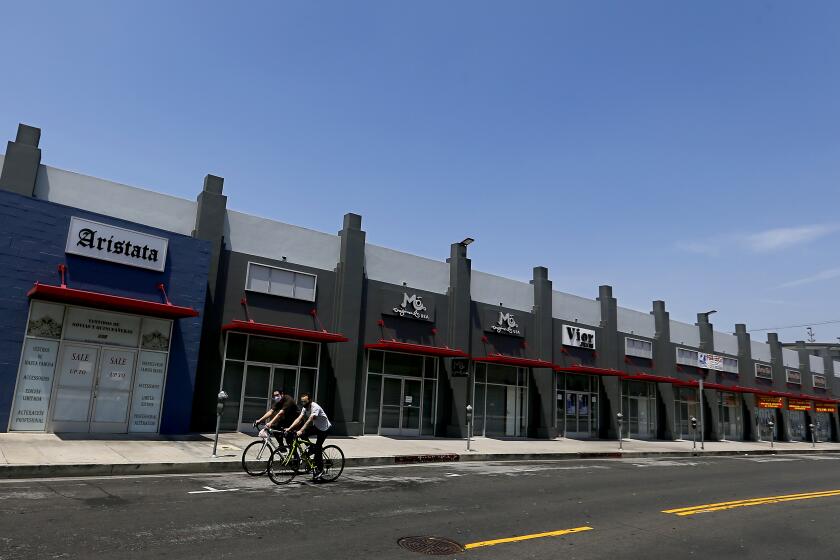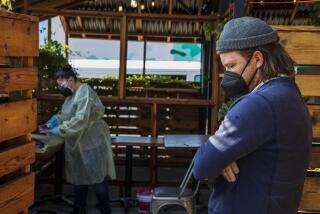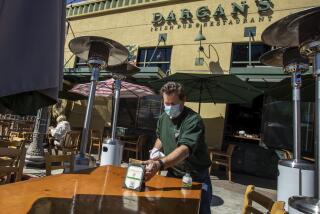Rural California is demanding to reopen now even as Newsom urges patience
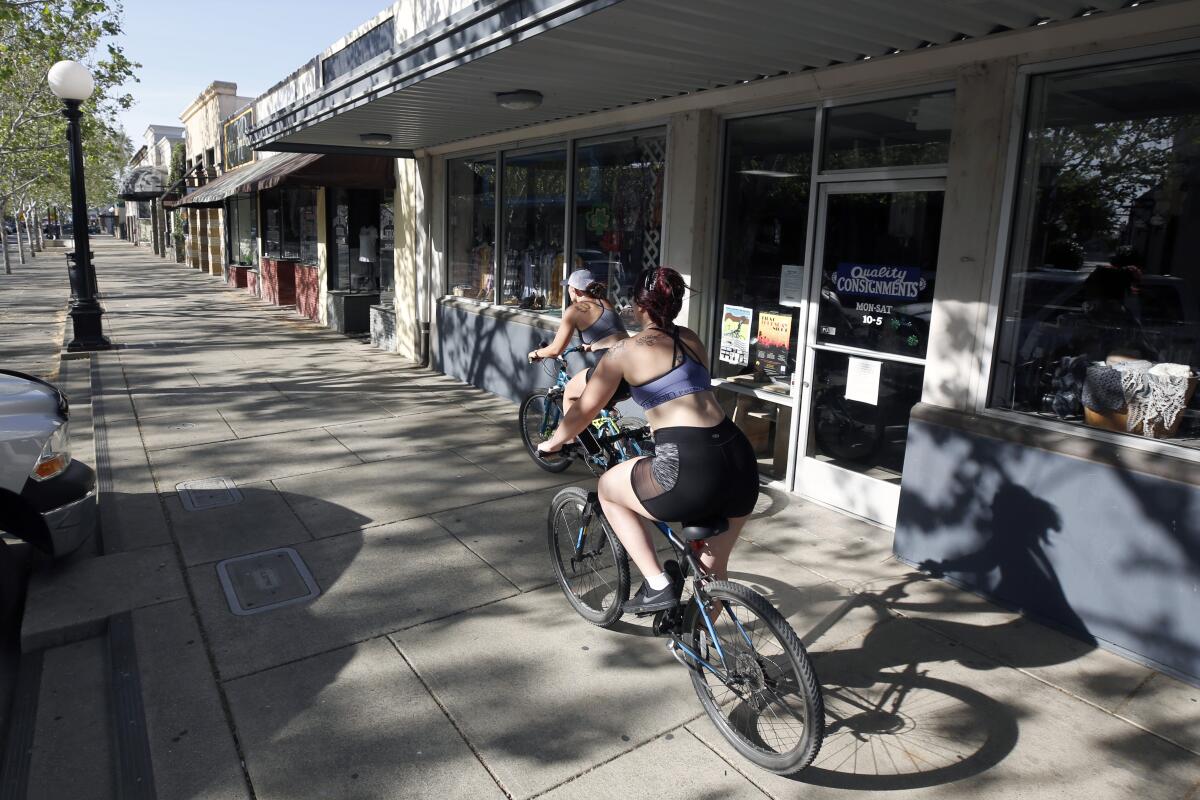
- Share via
For Bob Williams, the chairman of Tehama County’s Board of Supervisors, the numbers don’t justify the reality. The rural Northern California community of 65,000 has had only one case of the coronavirus, but it continues to face the same restrictions from the state as denser cities such as Los Angeles, which has had more than 23,000 cases.
That’s why Williams has joined elected officials from the Central Coast, Central Valley, Northern California and elsewhere who have asked Gov. Gavin Newsom to let them gradually lift their stay-at-home order. They have argued that their infection rates are incomparable to hot spots in the state and that the coronavirus appears under control.
Tehama County will already suffer from the cancellation of the 99th annual Red Bluff Round-Up, a rodeo that generates $4 million to $7 million for a local economy that only has a sales tax revenue of about $2 million a year. By reopening, Williams hopes to lessen the harm.
“Is it fair to treat Tehama the same as L.A. County?” he said. “I think the locals that are dealing with the problem here are better suited to understand what’s needed in rural California than folks in Sacramento or L.A.”
Six weeks into the governor’s order, pressure has mounted for officials to begin phasing out restrictions. Nineteen counties from Humboldt to Tuolumne have recorded no fatalities from the virus. Moderately populated counties such as Fresno and Santa Barbara have single-digit death tolls.
Last Friday, a letter from elected officials in Northern California’s Butte, Glenn, Tehama, Yuba, Sutter and Colusa counties asked the governor to “allow our counties to exercise local authority to implement a careful and phased reopening of our local economies,” noting they had only one coronavirus patient in intensive care. An earlier letter signed by cities in Stanislaus County proposed steps to loosen restrictions and San Luis Obispo County, which has recorded one death, has also requested permission to reopen.
Modoc County, one of California’s least populated counties, will let all businesses, schools and churches open with social distancing.
One region is moving forward without the governor’s blessing. Modoc County, which has fewer than 9,000 residents and reported zero coronavirus cases, has announced it plans to allow all businesses, schools and churches to reopen starting Friday, as long as people stay six feet apart.
“Our businesses are dying and people need to be able to feed their children and pay their rent,” said Heather Hadwick, the deputy director of the county’s Office of Emergency Services. “We live a different life than the rest of California. We’re very rural and naturally socially distanced in our everyday lives.”
Newsom has acknowledged the differences, stating that not all regions would be allowed to loosen the shutdown rules at once. He’s presented a plan that requires that the state’s 58 counties be able to perform robust contact tracing so they can track potential spread of the coronavirus.
“The state is not one-sized but nor is rural versus urban one-sized as well,” he said this week. “I want to come out together with a certain baseline of expectation … and then make accommodations for variance.”
Jeffrey Martin, an epidemiologist at UC San Francisco, said counties should have a low and manageable level of infection, adequate testing, and the ability to address stigma associated with a positive case.
“The decision to shelter in place was maybe easy,” he said. “We saw a mounting number of infections and there was really only one thing to do.… In contrast, this opening-up one is a lot harder. We’re not forced to make the decision in a second.”
Mayor Kerri Warren of the city of Willows in Glenn County is among those who have urged for reopening early. The county of 28,000, she pointed out, has had five positive cases.
Willows used to receive substantial tax revenue from a car racetrack in the area, she said. Hundreds of visitors would fill up hotels on weekends. Now, the hotels are nearly empty and only several businesses are open downtown.
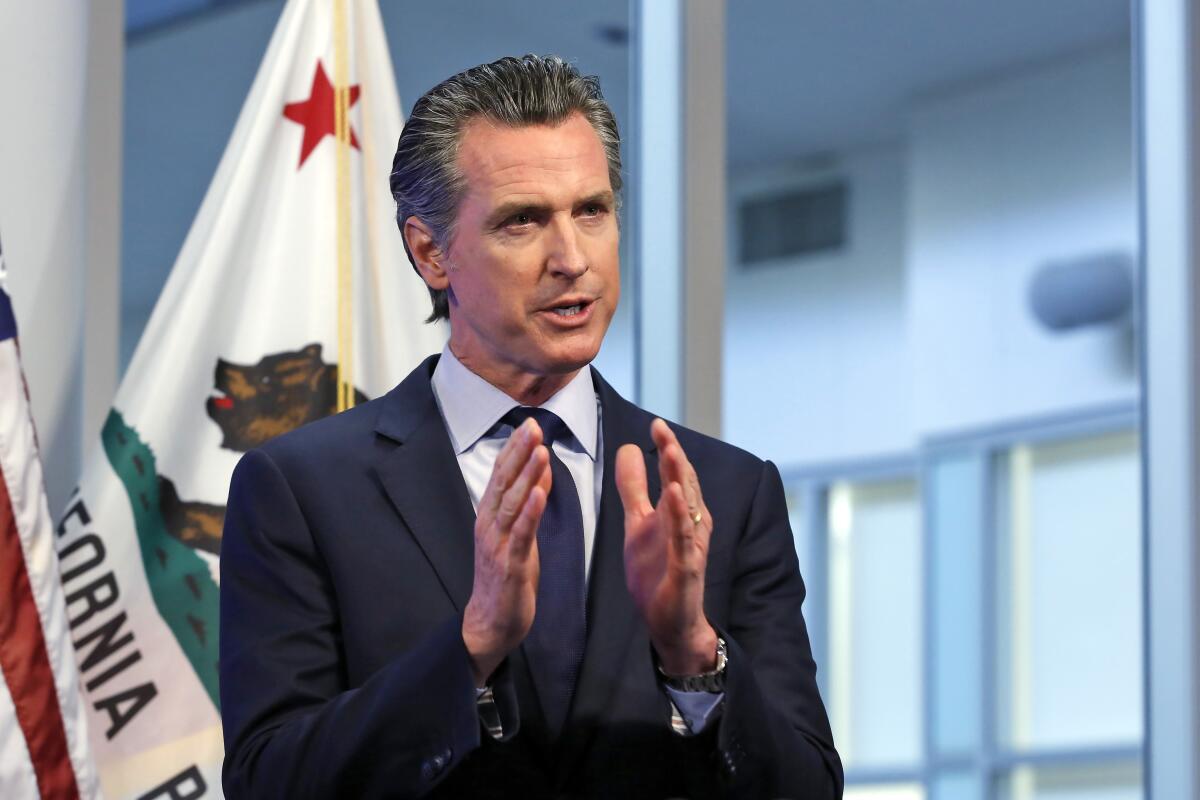
“Though we sympathize with what’s going on in Southern California, to hold Northern California to those restrictions, it’s not right, because we don’t have the issues they’re having down there,” Warren said. “Whenever we reopen, if the curve is not staying flat or getting flatter, by all means we will do what we have to do and pull back.”
Jared Garrison, the county’s health officer, agreed that it’s time to gradually reopen. Four of the coronavirus cases, he said, were contracted outside the county, while the fifth is unknown.
“We’ve got everything shut down for one case,” he said.
The county’s only hospital had prepared for a surge by expanding beds, building the base for a mobile field hospital, and adding video monitors so nurses could watch patients remotely, among other steps.
It has had no coronavirus hospitalizations. With a reduced number of patients generally, nurses are being asked to work fewer shifts — raising fears they might leave.
“That is the big thing that we really fight in these rural hospitals — it’s staffing, and good, competent staff,” Garrison said. “When someone leaves, they don’t usually come back, unfortunately.”
California officials still have a lot to do before they can meet the benchmarks that Gov. Gavin Newsom set to reopen the economy and lift restrictions on daily life.
Other officials who signed the letter are reassured by the fact that the surges they prepared for never came.
Yuba and Sutter counties have had more than 40 cases, with eight hospitalizations and three deaths. The counties, which will soon expand testing and have a plan for contact tracing, had secured two high school gyms as alternate medical sites.
“The surge hasn’t materialized,” said Ricky Samayoa, the mayor of Marysville, a city of about 12,000 in Yuba County. “That gives me optimism that we are doing the right thing.”
Sandee Drown, who runs the Happy Viking Sports Pub and Eatery in Sutter County’s Yuba City with her husband, favors reopening soon. Their revenue has dropped by about 70% and they’ve had to lay off dozens of employees.
Drown acknowledged that they might only have every other table in the restaurant available to ensure social distancing. But seating customers, she said, would probably increase revenue by 20%.
“Having customers come in — that’s huge for us,” she said. “We’re barely able to keep our doors open. It’s very stressful.”
In their letter, seven mayors from Stanislaus County in the Central Valley asked Newsom to pursue “an aggressive strategy” to reopen their county. The region has had more than 300 coronavirus cases and 11 deaths, and recently saw an outbreak in a nursing center. So far, more than 90 residents and staff members at the Turlock Nursing and Rehabilitation Center have tested positive. Six current and former residents who tested positive have died.
Raj Singh, a spokesman for the county’s Office of Emergency Services, said that the county has 33 full-time contact tracers. It recently began offering up to 200 tests a day at a community site but has only been conducting about half of that, and is in the process of investigating whether the lower number is due to transportation issues or other barriers.
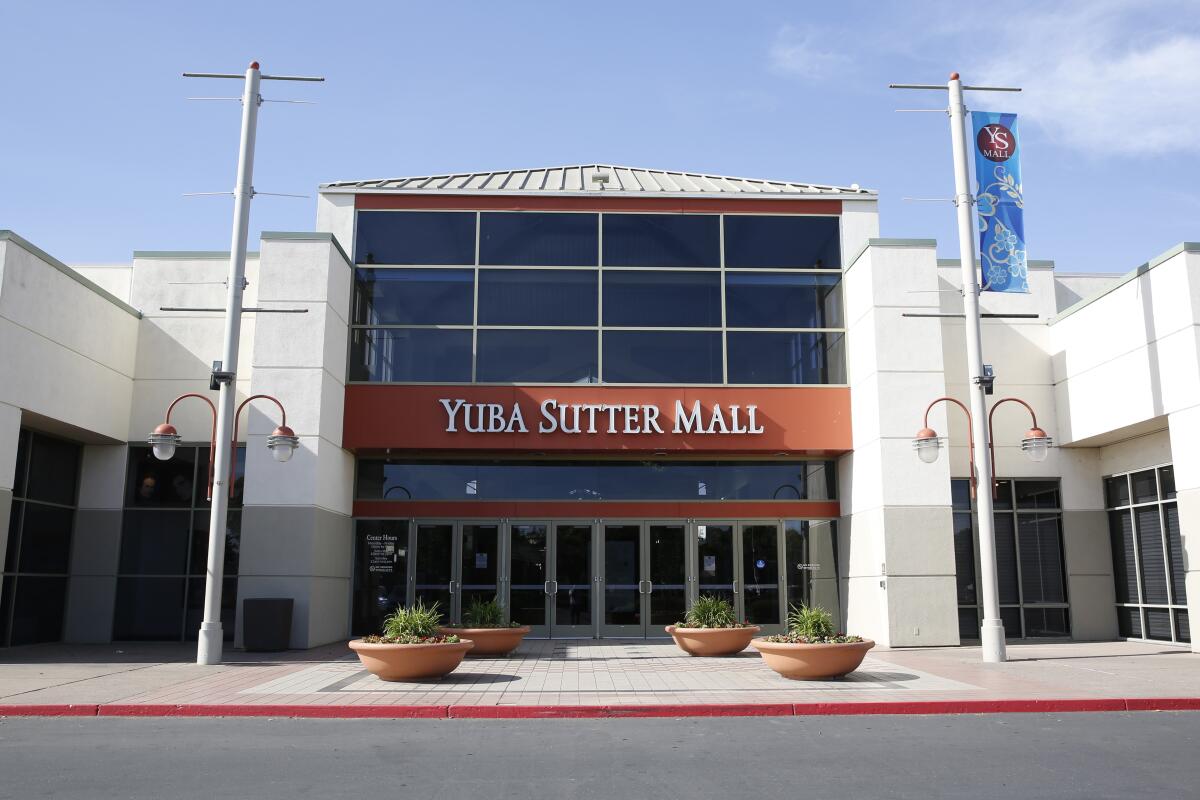
Patterson Mayor Deborah Novelli chose not to sign the letter. She said she’s still hearing that residents with mild symptoms are not being tested and that cases in her city, which has a population of 22,000, have been increasing.
“I empathize with the business community. We need to have the county up and going and functioning, but right now I don’t think it is the time,” she said. “We can’t open up the economy to the detriment of the people.”
But Stanislaus County has already formed a task force with leaders from various business sectors to come up with guidance for reopening.
David White, the CEO of Opportunity Stanislaus, an organization that supports economic development, said the group is also preparing a virtual workplace safety training. Participating businesses would receive a sticker they could then display to boost the public’s confidence.
“We’re not going to move ahead of the state,” White said. “What we’re trying to do is provide a safe initiative that could be a model for the state for counties like ours that want to open up cautiously and carefully.”
More to Read
Sign up for Essential California
The most important California stories and recommendations in your inbox every morning.
You may occasionally receive promotional content from the Los Angeles Times.
